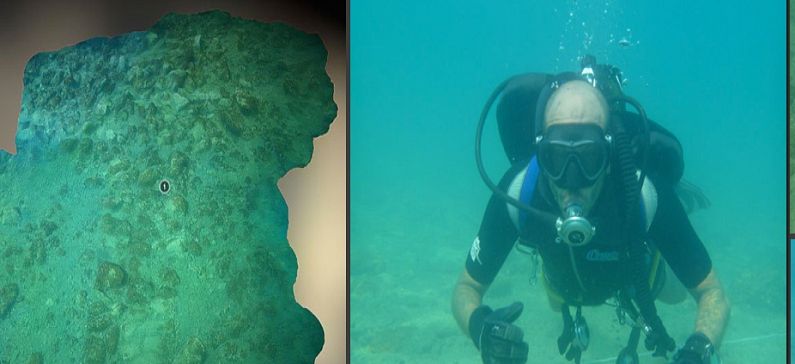
Ancient Greek sunken city found in Peloponnese
The Hellenic Ministry of Culture, Education and Religious Affairs has announced that remnants of a massive Bronze Age city have been discovered submerged in the Aegean Sea. The settlement, which dates back approximately 4,500 years, covers an area of 12 acres and consists of stone defensive structures, paved surfaces, pathways, towers, pottery, tools, and other artifacts.
The discovery was made by a team of experts from the Ephorate of Underwater Antiquities, University of Geneva and the Swiss School of Archaeology at Kiladha Bay on the Peloponnese Peninsula south of Athens, while they were searching for evidence for the oldest village in Europe. While they were hoping to find traces dating back at least 8,000 years, the finding of the ancient city is no less significant.
Professor Julien Beck of the University of Geneva said the foundations are of a “massive nature, unknown in Greece until now”.
“The importance of our discovery is partly due to the large size. There must have been a brick superstructure above a stone foundation. The chances of finding such walls under water are extremely low. The full size of the facility is not yet known. We do not know why it is surrounded by fortifications” he added.
Beck explained that the discovery of the ancient city is important because of the quantity and quality of the artifacts that were retrieved, including pottery, red ceramics, stone tools, and obsidian blades dating to the Helladic period (3200 to 2050 BC). In fact, it was pottery fragments seen during training at the nearby Lambayanna beach that eventually led them to discover the city as they followed the trail of artifacts.
In total, more than 6,000 artifacts were pulled up from the ruins, which Beck has called an “archaeologist’s paradise.” The obsidian blades are believed to have come from volcanic rock sourced at the island of Milos in the Cyclades archipelago, inhabited since the third millennium.











